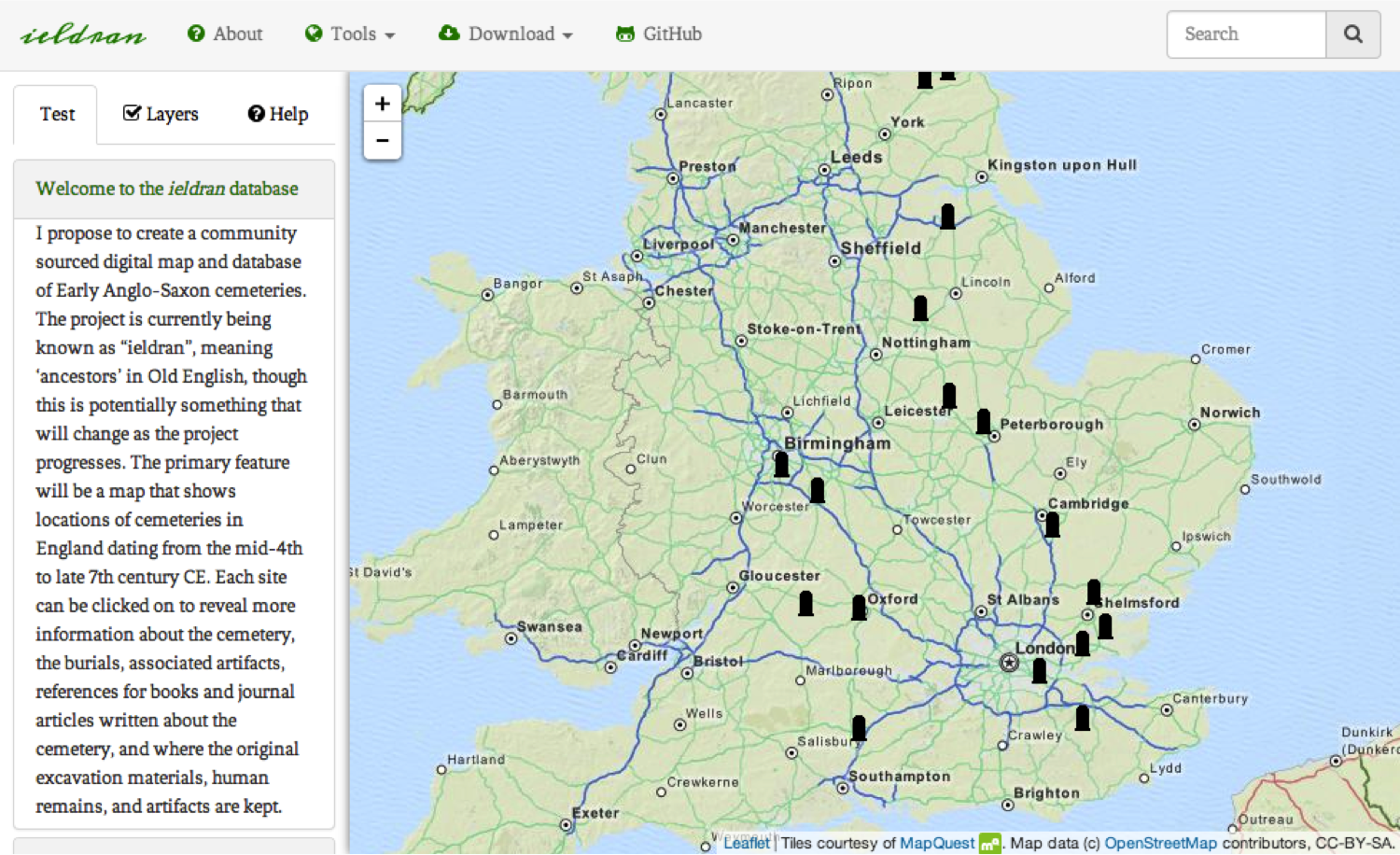As stated in my previous post, a problem within archaeology is that there are thousands of sites that have been excavated, and information about these sites and their collections can be difficult to find. Cemeteries from Early Anglo-Saxon England have been excavated, studied, and curated since the 17th century. There are hundreds of collections found across England in museums, universities, government offices and private holdings. However there is no single source for learning about what collections exist, who has them, and what they consist of. Studies have shown that sites that are shared online are more likely to be used and reused in new research projects, whether complete data be shared or just location and information about the site.
I proposed to create a map based interface for individuals to learn about Early Anglo-Saxon cemeteries called ieldran. I have decided to use Bootleaf as my framework as it provides a simple and clean site layout, and is centered around a map. The framework is a mash-up of Bootstrap 3 layouts and Leaflet mapping. It uses a preprocessor CSS called LESS, jQuery, and pulls from GeoJSON files. This framework is great for this type of project since it is focused around the map, and provides easy interaction for the user. The back end is also nice to work with because the map data is stored separately. That means map data can be updated easily without changing other parts of the framework.
ieldran will allow users to search for sites, toggle different map and site views, contribute data to the project, and get links to external websites such as Archaeology Data Service or Open Context. The goal is that we will map the majority (if not all) Early Anglo-Saxon cemetery sites, with a brief summary about the cemetery, information about who has written on it, and links to museums or universities holding the collections. By increasing knowledge of what collections and resources are available, we can improve the study of this period, and prevent re-collection of this type of data.
At this point, I have begun to customize the framework and have added a small layer of test cemetery data to begin editing the pop-ups. I am still working to get increased interaction with the map, improve the modals, and make the site more personalized. If you have any suggestions for making ieldran more robust and interactive, or have access to data to add, please let me know! Included throughout this post are some screenshots of the current design of ieldran, including the main screen, map interaction page, and modals. There is a lot of work still to be done, but I am very excited that it has come this far already!

